Advertisement
There's a great blue hole in the marine industry's skilled labor force. The causes are complex, and easy solutions remain elusive.
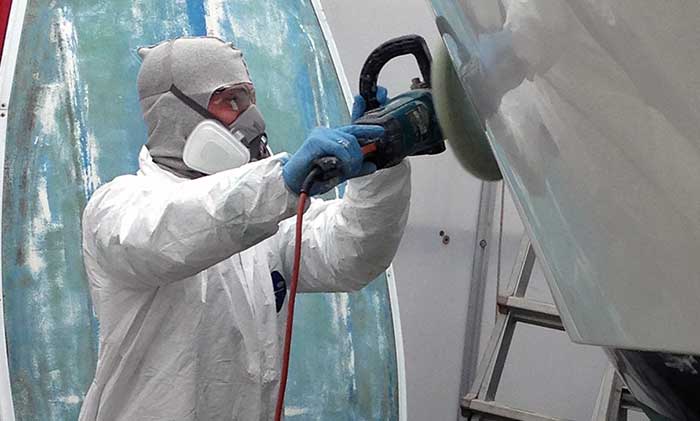
Students in the Rhode Island Marine Trades Association Pre-Apprenticeship Training Program get hands-on experience in a wide range of skills needed for jobs in the marine trades. The short-term program for Rhode Islanders has an over-90-percent job-placement rate. (Photo: RIMTA)
When was the last time you saw a kid changing his or her own car oil or spending hours messing around under the hood learning how engines work? It's a rare sight these days. Between modern high-tech engines and automobile manufacturers that discourage shade-tree tinkering, young people rarely have an opportunity to find out whether they have aptitude or interest in mechanics. This "skills gap" carries over into the boating industry, translating into a glut of available jobs — from manufacturing, to building, to engine mechanics — with no one to fill them.
Tip
Bridging The Technical Divide
"Manufacturers need to advertise this as a viable industry for a young person," says Marhevko, "and make it attractive by providing training."
One company doing just that is MarineMax, a national broker, lender, and marine-service company that has seen its employee base aging and shrinking and witnessed a large gap when it comes to hiring new skilled workers to fill those openings.
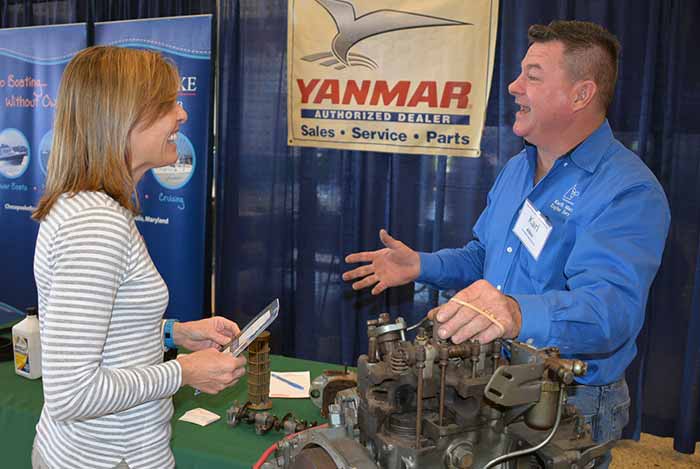
Photo: Pete Chambliss/EYCF
"Technical schools do a great job in the classroom," says Gayle Niedenfuer, MarineMax director of operations. "But candidates are coming into our dealerships trained in the basics, without the necessary real-world experience with different brands and different complex systems." So this past fall, MarineMax started a program to bridge the educational gap while building a talent pipeline. The MarineMax Technical Training Center in the company's Clearwater, Florida, store offers six months of classroom and hands-on training on a wide range of systems and brands. American Boat and Yacht Council (ABYC) and individual manufacturers are involved in the training. Students are considered employees from the time they start the program and, when finished, will go on to work in one of MarineMax's 70 stores around the U.S. and Puerto Rico.
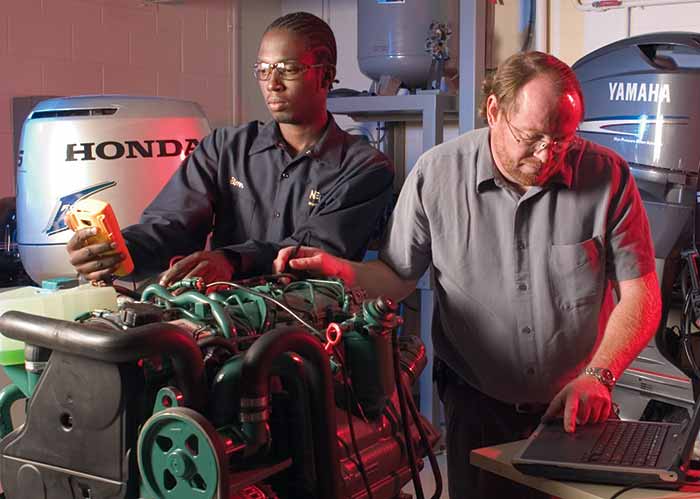
Photo: New England Institute
Also implementing real-world solutions is Randy Ramsey, president and founder of Jarrett Bay Boatworks, a custom sportfish builder in Beaufort, North Carolina, for the past 30 years and one of the largest repair yards in the Southeast. Jarrett Bay employs about 180 people, including machinists, electricians, plumbers, mechanical fitters, woodworkers, painters, and laminators. Ramsey confirms that his company's growth has been held back because of a lack of skilled people.
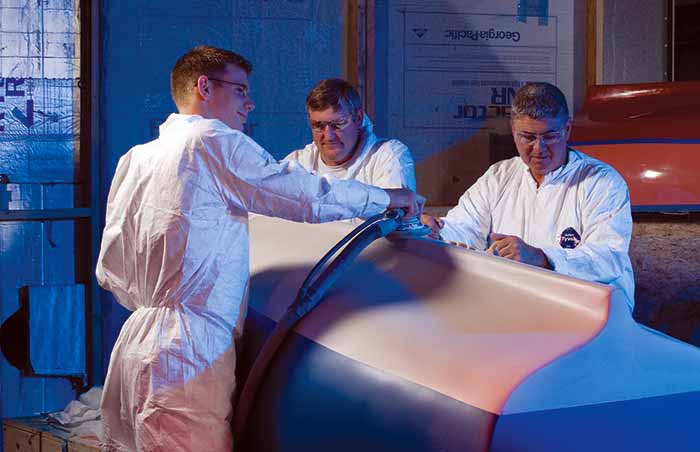
Photo: New England Institute
"It's easy to hire a marketing person," he says. "There are lots of people who've studied marketing. But they make less money than a skilled carpenter, because the carpenter is in demand. Same with engineers. It's easy to hire engineers. But hiring mechanics? That's a challenge." Ramsey points out that this issue has bigger implications than just employment: The lack of available workers affects boaters, too. "Either we have to turn away business, or customers have to look elsewhere due to long turnarounds."
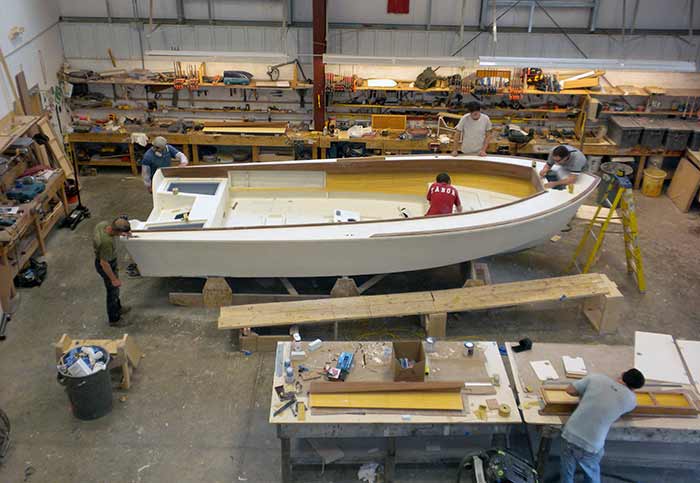
Photo: Tim Murphy
As a result, Ramsey and his team leaders find themselves offering summer internships to older high-school and college students and working with retired military, "who are highly sought after." Jarrett Bay Boatworks puts a huge investment into its employees, so moving them up from within and helping them excel is critical.
"One thing potential workers need to know is that while there are great jobs available, this is hard work. It's physically demanding. There's a certain mentality that's needed for these jobs. But once you get past that, the jobs are highly rewarding, both financially and from a career perspective."
Ramsey also points out the need for continual training and innovation. "If you're not improving in this business, you're falling behind."
Future College Students, Listen Up!
Employment in environmental and marine fields is expected to grow nearly 30 percent by 2018, according to a U.S. Department of Labor report. Driving this increase are coastal population growth, urbanization of the coast, and the need to maintain and expand working waterfronts. Opportunities will include environmental policymaking; regulations compliance; water-resource preservation; exotic/invasive pest control; and marine, ocean, and coastal conservation.
There are lots of other newer programs to consider. For instance:
- Marine Affairs/Marine Policy: While such programs have been traditionally reserved for advanced degrees, several schools now offer undergraduate programs. This interdisciplinary major marries social and natural sciences with statistics, economics, political ecology, computer programming, and more. Possible careers include policy-making on local, state, or federal government levels; non-government nonprofits; environmental protection; fisheries management; marine transportation; environmental consulting; marine insurance; shipping; and political ecology.
- Oceans/Coastal/Maritime Law: This concentration has grown significantly in the last decade due to the changing climate and water levels and to the many legal and policy changes regarding our oceans and waterways, coastlines, and water rights.
For more ideas for creative careers in the marine world, see the article "The Boat Lovers' Guide to Marine Colleges" by Tim Murphy.
Marine-Related Jobs Outlook
We drilled down on an array of marine careers to find out what they pay, academic credentials needed, and employment outlook. Here's an idea of how many jobs in each category were available in 2014, estimated growth through 2024, and median salary in 2015.
| Marine Professions | # of Jobs 2014 | Expected Growth | Median Salary 2015 | Typical Education |
| Commercial Divers | 4.400 | 37% | $50,470 | Post-secondary certificate |
| Cartographers | 12,330 | 29% | $61,880 | Bachelor's degree |
| Marine Engineers/Naval Architects | 8,300 | 9%–13% | $93,110 | Bachelor's degree |
| Ship & Boat Captains | 35,000 | 9%–13% | $76,780 | Post-secondary certificate |
| Environmental Scientists & Specialists | 95,000 | 9%–13% | $64,460 | Bachelor's or Master's degree |
| Diesel Service Technicians & Mechanics | 263,900 | 12% | $44,520 | High-school diploma or equivalent, post-secondary certificate |
| Small-Engine Mechanics | 71,700 | 5%–8% | $34,650 | High-school diploma or equivalent, post-secondary certificate |
| Ship Engineers | 10,000 | 5%–8% | $72,870 | Post-secondary certificate |
| Environmental Economists | 22,0000 | 5%–8% | $99,180 | Master's or doctoral degree |
| Biologists (including marine, aquatic, fisheries) | 36,000 | 2%–4% | $72,220 | Bachelor's, Master's, or post-doctoral training |
| Source: The U.S. Department of Labor's "Occupational Outlooks Handbook." Visit onetonline.org for specifics. | ||||
Opportunities Abound, And BoatUS Can Help
Building and fixing a boat today has become a much more technical enterprise than it was years ago — between CAD-CAM (computer-aided design, and computer-aided manufacturing), the use of space-age building materials and techniques, and all the sophisticated systems installed. The marine industry awaits more electronically and technically motivated young people to enter the field, get solid training, and become an important part of taking the industry to the next level.
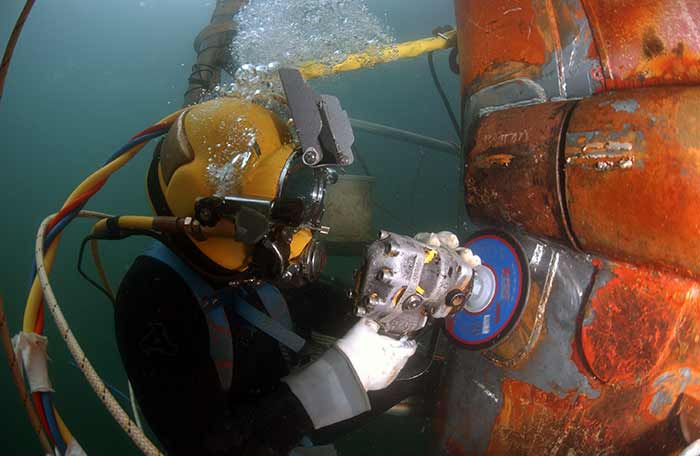
Photo: U.S. Navy/Andrew McKaskle
BoatUS Magazine has done some of the homework for students and second-career candidates interested in exploring marine-career options and the multitude of accredited certification programs, first-rate one- and two-year trade schools, and community colleges.Read our other in-depth article on this subject: "The Boat Lovers' Guide to Marine Trade Schools" by contributing editor Tim Murphy.
All Work And No Play? No Way!
Did you know that the student who loves the water and boats can bring those passions along, and go to a college with great sailing, fishing, and waterskiing clubs and teams? For instance:
- The top bass-fishing schools in the country are the University of Alabama; the University of North Alabama; and Murray State University, in Kentucky.
- The top-ranked sailing teams (for the 2015–2016 school year) are at Georgetown University, in Washington, D.C.; Connecticut's Yale University; and Boston College.
- The top-ranked waterskiing teams are at the University of Louisiana at Lafayette; Florida Southern College, in Lakeland; and the University of Louisiana at Monroe.
Sources: Collegiatebasschampionship.com, Collegesailing.org, USAWaterski.org
